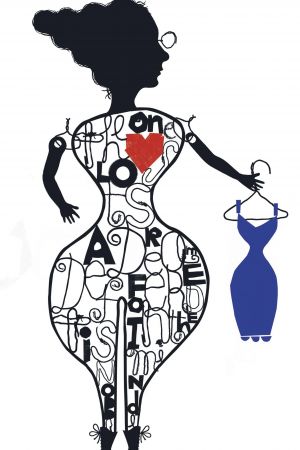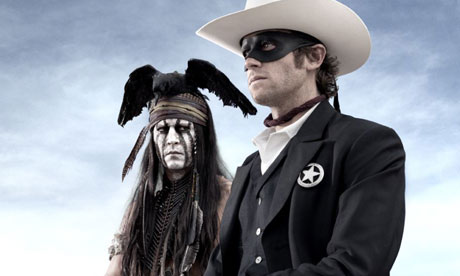 It’s been interesting to see Culture on the Edge‘s two month old site cited recently — for example, consider this post below from a Metafilter.com discussion board about one of my own posts on the Aslan/FOX News affair (click to enlarge): Continue reading “The Reporter and the Author”
It’s been interesting to see Culture on the Edge‘s two month old site cited recently — for example, consider this post below from a Metafilter.com discussion board about one of my own posts on the Aslan/FOX News affair (click to enlarge): Continue reading “The Reporter and the Author”
Now You See It, Now You Don’t: On Deception and Identity
 Ever seen those? Those are Spanx brand undergarments. I’ll get to them in a minute.
Ever seen those? Those are Spanx brand undergarments. I’ll get to them in a minute.
I have just returned from my 20th high school reunion, which, as one might imagine, provides a cornucopia of data on identity. There were plenty of “Can you believe it’s been twenty years?” comments, the resurrection of lots of insider jokes that were much funnier long ago, and many discussions of spouses, jobs, and kids. In other words, it was an enjoyable, albeit predictable, time. Continue reading “Now You See It, Now You Don’t: On Deception and Identity”
Look Who’s Talking!

In the initial post responding to the Reza Aslan/Fox News interview, Craig Martin brought our attention to the ways in which similar logic can be used to launch competing identity claims. Particularly resonant for me is a quick anecdotal move in his post that contains much when considered carefully. He notes, “When I go to the American Academy of Religion annual meeting, I see lots of scholarship production tied to scholars’ identities, and much of it is very political.” I know exactly what he means. Continue reading “Look Who’s Talking!”
Double Standards
 My love for the ancient Greek theatre certainly derives from my upbringing and schooling in Thessaloniki, the second largest city in Greece. For many Greeks seeing our ancient literary heritage being performed in outdoor theatres, especially during summer festivals, is certainly seen as being a step closer to our past. Today, the most well-known festival in Greece is the one that takes place every summer (since 1955) in one of our ancient theatres (known also for its great acoustics) the “sacred” (as you will hear it often referenced in Greece) theatre of Epidaurus.
My love for the ancient Greek theatre certainly derives from my upbringing and schooling in Thessaloniki, the second largest city in Greece. For many Greeks seeing our ancient literary heritage being performed in outdoor theatres, especially during summer festivals, is certainly seen as being a step closer to our past. Today, the most well-known festival in Greece is the one that takes place every summer (since 1955) in one of our ancient theatres (known also for its great acoustics) the “sacred” (as you will hear it often referenced in Greece) theatre of Epidaurus.
On Authority
Misplaced Agency
 The assumptions within the assertions of identification in the Reza Aslan/Fox News interview have received some attention this week, including Craig Martin’s “Identity Claims Play out on Fox” and Russell McCutcheon‘s “Are You Buying It?” both on this blog. A different comment from Aslan, though, grabbed my attention (unfortunately not for its uniqueness). In addition to emphasizing his academic credentials to defend his study of the historical Jesus, published as Zealot, he argues that his identification as Muslim is irrelevant because his book “overturns pretty much everything that Islam also thinks about Jesus.” Since his work is not trying to promote Islamic orthodoxy, it seems that his religious identification is irrelevant.
The assumptions within the assertions of identification in the Reza Aslan/Fox News interview have received some attention this week, including Craig Martin’s “Identity Claims Play out on Fox” and Russell McCutcheon‘s “Are You Buying It?” both on this blog. A different comment from Aslan, though, grabbed my attention (unfortunately not for its uniqueness). In addition to emphasizing his academic credentials to defend his study of the historical Jesus, published as Zealot, he argues that his identification as Muslim is irrelevant because his book “overturns pretty much everything that Islam also thinks about Jesus.” Since his work is not trying to promote Islamic orthodoxy, it seems that his religious identification is irrelevant.
Are You Buying It?
 In the post-game commentary about how terribly author Reza Aslan was treated in that online FOX News interview, in the rush by scholars of religion on Facebook to identify with a misunderstood scholar just trying to do his job, and in the backlash now coming out against the way that he authorized himself by trotting out his degrees, one thing seems to be lost: this was a great moment for global capitalism. After all, a book tour (not the thing most scholars ever set out upon, by the way) is designed to do nothing else but sell, and so the interview was just one more moment in a marketing plan. I’m not criticizing it, since many of us have books we hope to sell, but suggesting that we’ve missed the point if we fail to remember that publicity is all both sides in that dance are going for (either to sell more ads on TV or the web or more books on amazon.com). Continue reading “Are You Buying It?”
In the post-game commentary about how terribly author Reza Aslan was treated in that online FOX News interview, in the rush by scholars of religion on Facebook to identify with a misunderstood scholar just trying to do his job, and in the backlash now coming out against the way that he authorized himself by trotting out his degrees, one thing seems to be lost: this was a great moment for global capitalism. After all, a book tour (not the thing most scholars ever set out upon, by the way) is designed to do nothing else but sell, and so the interview was just one more moment in a marketing plan. I’m not criticizing it, since many of us have books we hope to sell, but suggesting that we’ve missed the point if we fail to remember that publicity is all both sides in that dance are going for (either to sell more ads on TV or the web or more books on amazon.com). Continue reading “Are You Buying It?”
Identity Claims Play Out on FOX

The interview with Reza Aslan on FOX News is already internet famous. (You can watch it here if you haven’t already seen it.) Continue reading “Identity Claims Play Out on FOX”
The Hunger Games
 Russell McCutcheon has posted a brief blog on another site commenting on a recent (and rather troubling) article that distinguishes English lot as the best major if ones goal is to make oneself a better human being — yes, you heard right.
Russell McCutcheon has posted a brief blog on another site commenting on a recent (and rather troubling) article that distinguishes English lot as the best major if ones goal is to make oneself a better human being — yes, you heard right.
Read his post here.
How…?
 You’ve probably heard about the controversies over Johnny Depp’s portrait of Tonto, in Gore Verbinski’s new film, “The Lone Ranger.” Although portraying a Comanche, the character’s “look” is based on a painting entitled “I am Crow” — and the artist is, yes, a white man (as is the the film’s director [of Polish descent], of course, as well as [to the best that I can figure] the Detroit radio men who first came up with “The Lone Ranger” back in 1932 [first broadcast in 1933]). But beyond that, there’s the general problem of how Hollywood’s depiction of Native Americans continues to reproduce troublesome stereotypes, such as argued in Salon.com‘s recent article on the film: Continue reading “How…?”
You’ve probably heard about the controversies over Johnny Depp’s portrait of Tonto, in Gore Verbinski’s new film, “The Lone Ranger.” Although portraying a Comanche, the character’s “look” is based on a painting entitled “I am Crow” — and the artist is, yes, a white man (as is the the film’s director [of Polish descent], of course, as well as [to the best that I can figure] the Detroit radio men who first came up with “The Lone Ranger” back in 1932 [first broadcast in 1933]). But beyond that, there’s the general problem of how Hollywood’s depiction of Native Americans continues to reproduce troublesome stereotypes, such as argued in Salon.com‘s recent article on the film: Continue reading “How…?”

